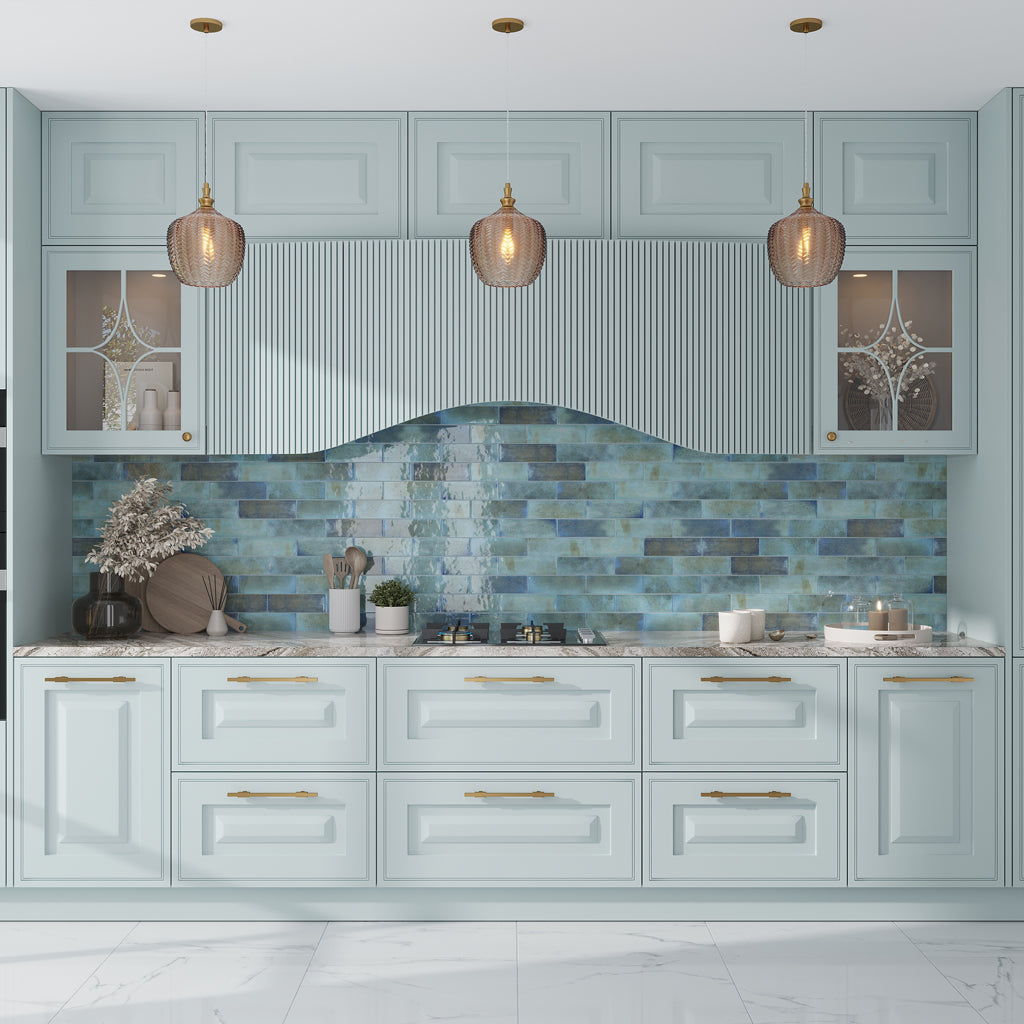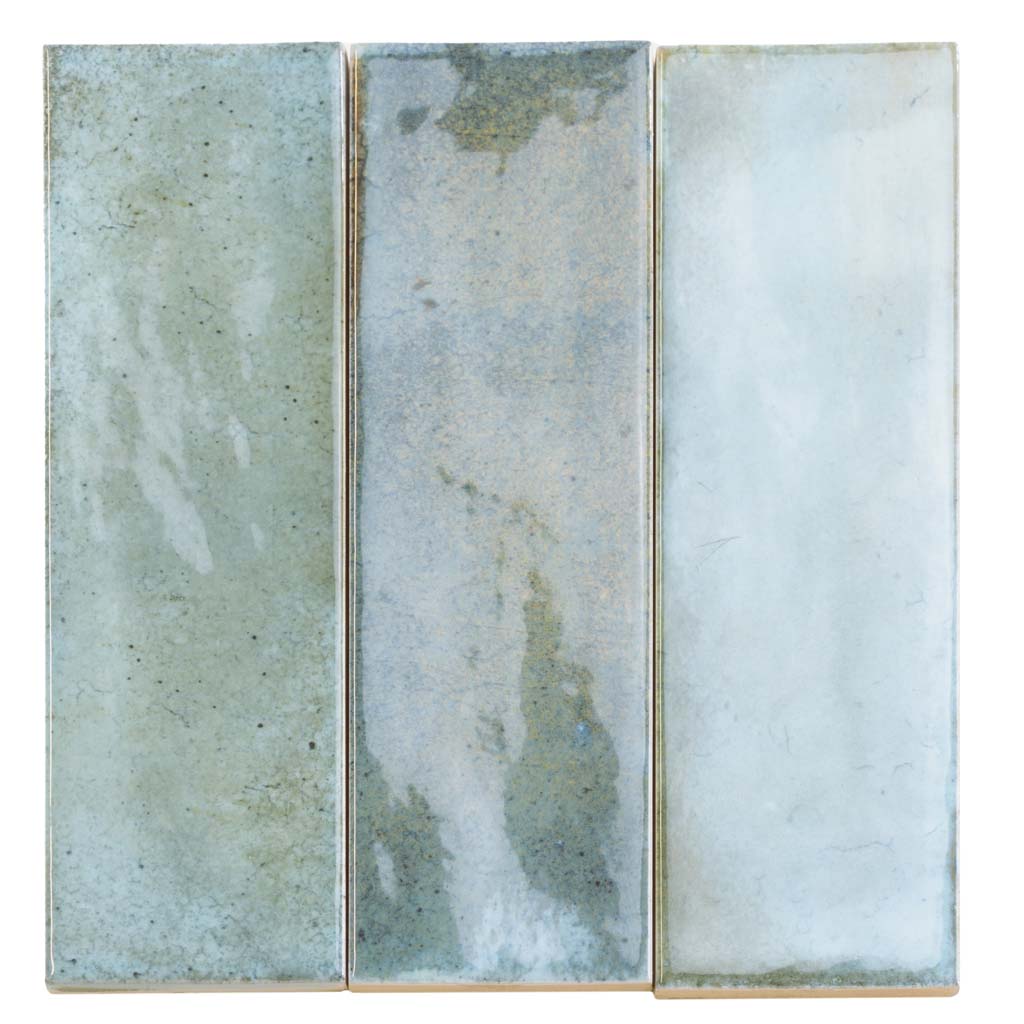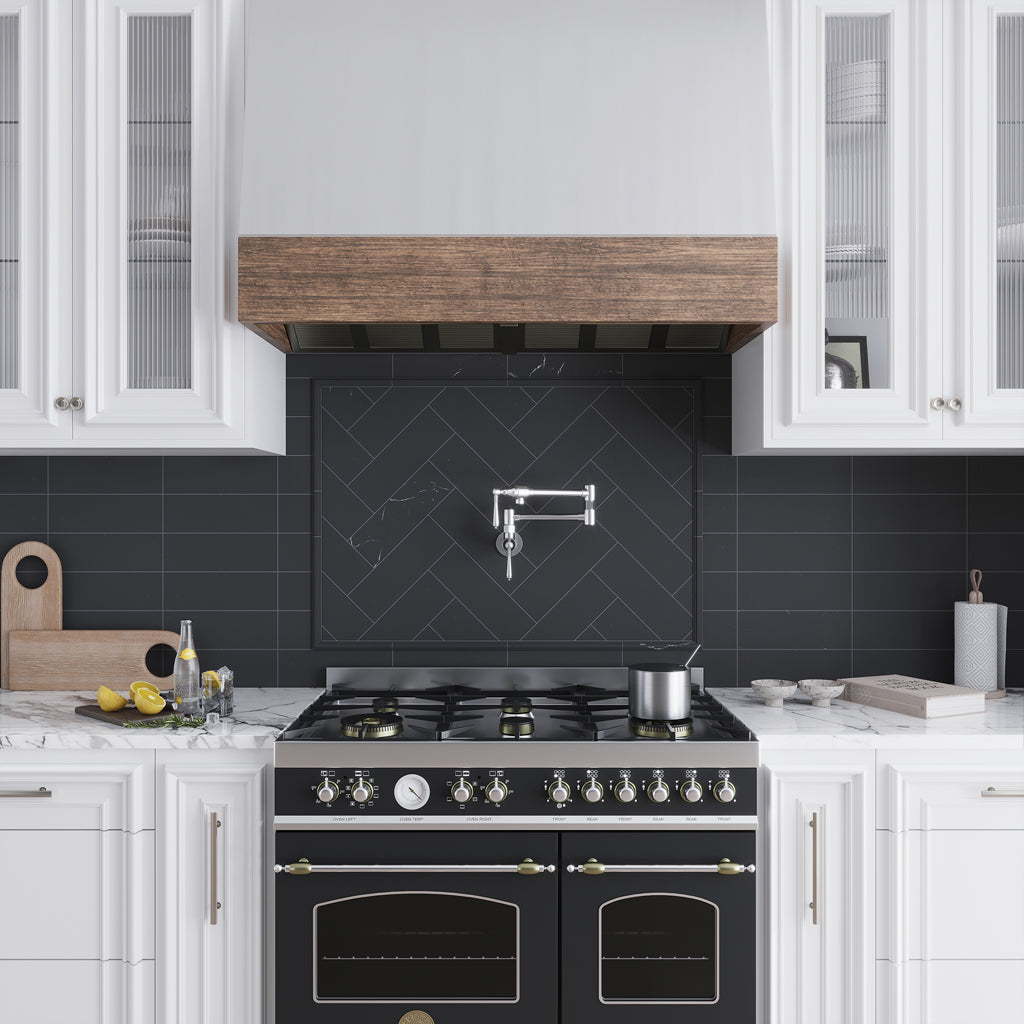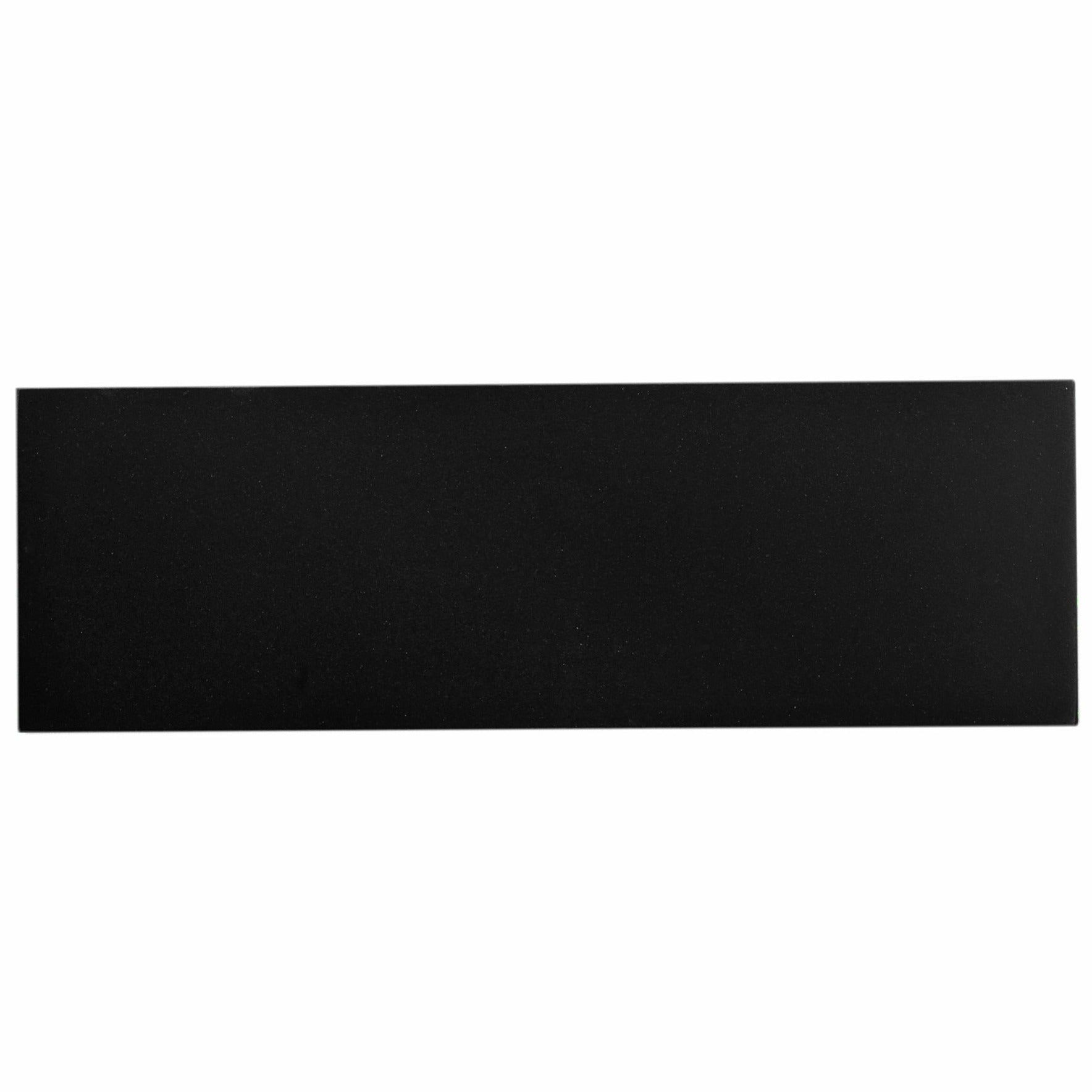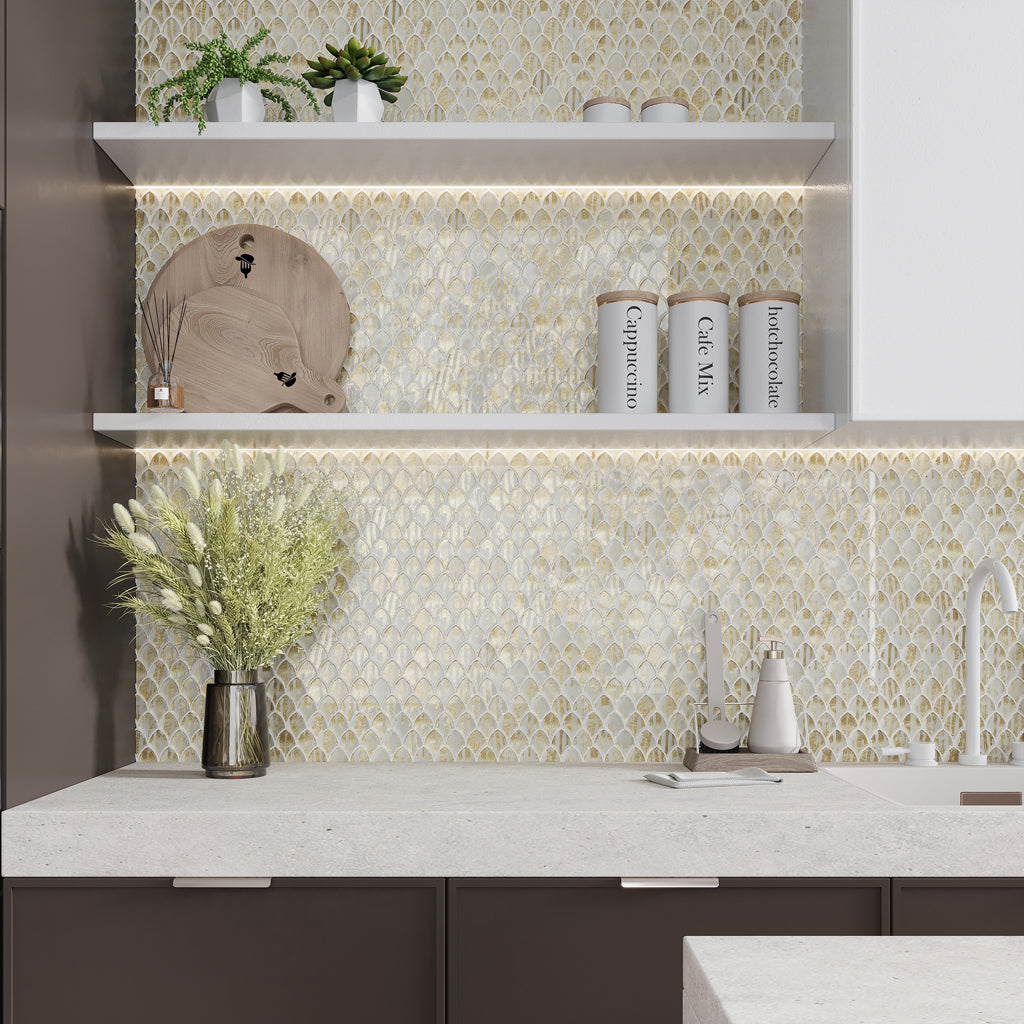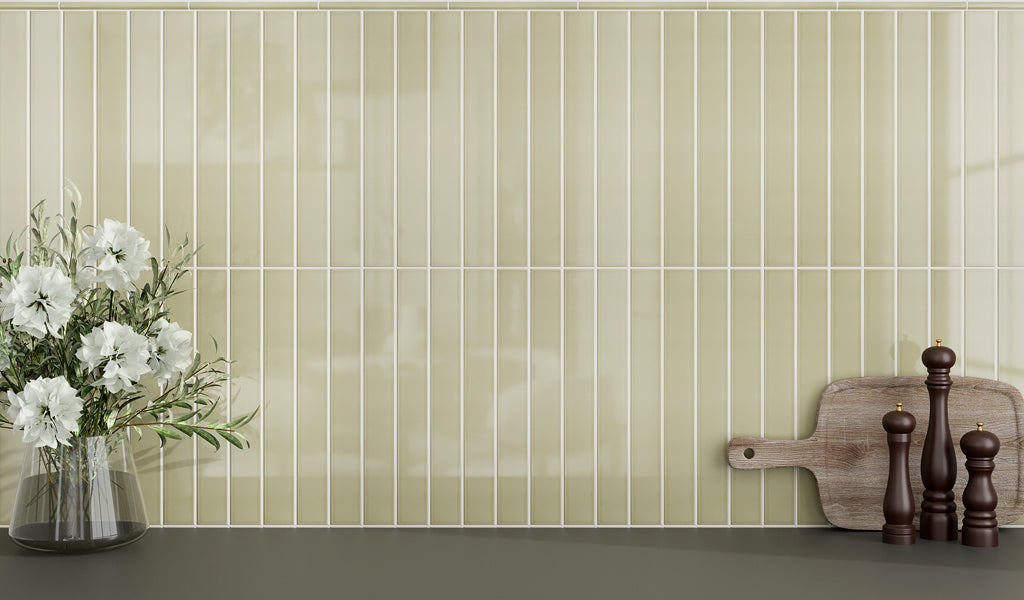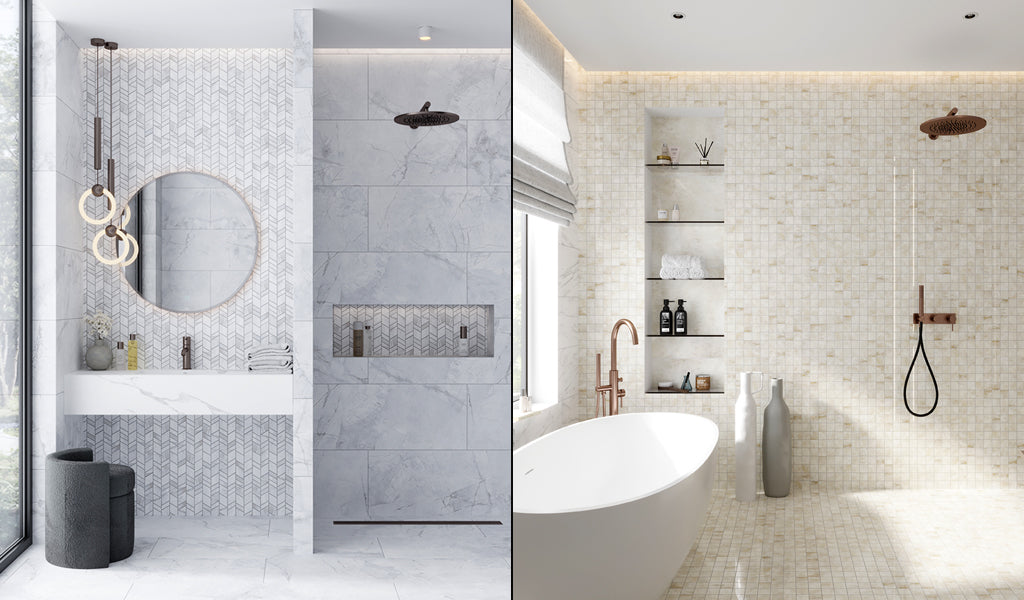Backsplash Height Guide: Standard Measurements, Tips & Design Ideas
Aug 22, 2025Selecting the ideal backsplash tile can change the style and functionality of the kitchen or bathroom. While some may pay more attention to material, color, or pattern, it’s important to get your backsplash height correct before shopping for tile. Whether you’re covering a small area or creating a full-height feature, having the right numbers in hand leads to a successful installation.
In this comprehensive guide, we’ll explore standard height measurements and design tips for the backsplash. We’ll also compare different heights, share creative options, and highlight common mistakes to avoid. By the end, you’ll understand how high the backsplash should go and how to make it look amazing in your space.
Standard Backsplash Height Measurements

There are standard backsplash height measurements; however, you can choose a different height that complements your style preference and room layout. These two industry-standard options are worth keeping in mind:
1. Standard Backsplash Height: The average height of a typical kitchen backsplash is about 4 inches, which can run from the countertop to below the upper cabinets. This is often the case in traditional kitchens. And in most scenarios, homeowners choose the same material for this area as their countertop since it’s affordable and gives a smooth, uniform look. For more tips on measuring the backsplash, read our blog: How to Measure and Plan Your Kitchen Backsplash.
2. Full Height Backsplash: In modern kitchens or bathrooms, the backsplash can run from the countertop to the ceiling. This height offers more protection against splashes and, at the same time, adds greater visual impact and personality to the space. It is a preferred backsplash height compatible with nearly any kitchen tile and a fantastic way to highlight color or pattern.
How to Choose the Right Backsplash Height
The perfect kitchen or bathroom backsplash height balances aesthetics and functionality. To make an informed decision on whether to go with the conventional height or a full wall feature, take the following into account:
Room Layout and Use
When determining the correct backsplash height for your space, it is advisable to think in terms of room type and use. In the kitchen, a full height backsplash can easily fend off spills and splatters resulting from regular cooking. For bathrooms, a 4-6 inch backsplash height can be sufficient to protect the vanity wall from splashes while offering a style boost.
Cabinet & Countertop Design
The countertop and cabinet design can also be a deciding factor. If you have top cabinets, you are restricted to the area in between. In the case of open shelves, you can tile behind them and create a full backsplash kitchen design that goes to the ceiling for a radical appearance.
Project Budget Consideration
The budget comes in on it, too. A standard backsplash height is typically cheaper, as it requires less tile. In contrast, a full height backsplash demands more material to attain that luxurious designer finish.
Tiling Material Selection
Material selection can't be overlooked, as some wall tiles look more appealing at certain heights. For instance, opting for a backsplash tile over kitchen cabinets that goes the full height above can truly accentuate a large format tile, while intricate mosaics work best with a standard height to add detail without causing visual overwhelm.
Overall Aesthetic Goals
When deciding on the height of the backsplash, take a moment to think about your overall design goal. Does the backsplash need to be a subdued backdrop for a less dramatic look or a strong focal point that serves to draw the eye? Think about how its height will interact with other architectural details and decorative elements. Will everything within the space work in harmony? These are just a few questions to keep in mind if you desire a timeless look that transcends the years.
Design Tips for Backsplash Height
The ideal height not only protects your walls but also elevates the ambiance of the room. Look to the design tips to get it right:
Create a Sense of Space with a Full-Height: Large-format, light-colored, or mirror-finish tiles can make your kitchen or bathroom appear more expansive. A full height backsplash draws the eye upwards, giving the room a feeling of height and a continuous flow.
Add Detail with a Standard Height: Standard-height backsplashes are best suited to introducing intricate designs like geometric mosaics, patterned ceramics, or textured finishes. They make a swoon-worthy statement, serve as conversation starters, and lift the appeal of countertops and cabinets.
Go Higher for Extra Wall Protection: Added height shields walls against splashes, spills, and cooking messes. This is especially convenient behind the hob, sink, or prep station where extra coverage will save you time and effort when it comes to maintenance.
Highlight the Tile Color or Pattern: A backsplash with greater visual impact can turn the tile’s bold color or striking pattern into the room's focal point. By continuing the design up the wall, you create a cohesive yet catchy aesthetic that elevates the entire space.
Balance Form and Function: Consider the overall style of the room and your lifestyle needs. A harmonious blend between style and function guarantees your backsplash looks just as beautiful as it is durable.
Full Height Backsplash vs. Standard Height: Pros and Cons
As mentioned earlier, a full height backsplash runs from the countertop to the ceiling. It is a dramatic look that offers the most wall protection against splashes and splatters. It's also ideal if you want to highlight a bold design or high-end material. It does require more tiling material and can result in a busy pattern becoming overwhelming, particularly in a petite space.
On the other hand, a standard 4-inch backsplash that can go between the countertop to the upper cabinets is quick and affordable to fit. Plus, it adds visual impact to the room and offers protection to bare walls. The drawback is that it may date a modern kitchen and requires that you choose the right style of tile that doesn’t create visual clutter.
Backsplash Heights with a Creative Twist
Next, let’s look at how you can switch it up and bring a creative outlook to your room’s design scheme :
Go for a Unique Tile Pattern for Intrigue: Trying out creative arrangements, like herringbone or chevron, can completely alter the backsplash. This is a fabulous way to add a layer of depth and a whole new dimension to the room, even if you go for a standard backsplash height. Consider options like White 12x12 Honed Herringbone Bianco Carrara Marble Mosaic Tile for a timeless look.
Stack Tiles Vertically for Added Height: Laying tiles vertically in straight rows can heighten the walls, particularly in kitchen or bathrooms with lower ceilings. This approach is best with a full height backsplash, and designs like Blue 2x8 Matte Ceramic Subway Deco Tile are great for giving an illusion of taller walls and a higher ceiling.
Use Bold Tile to Accent a Neutral Scheme: A backsplash doesn’t necessarily have to be simple—choosing a bold color or pattern can introduce energy into an otherwise neutral space. This design is strongest when paired with muted cabinetry and countertops so that the backsplash becomes the star of the show.
Lay Tiles Horizontally to Widen Narrow Walls: Horizontal tile installation can stretch out narrow walls, making the kitchen feel broader and more open. This technique adds width and enhances the ambiance of the room without the necessity of major renovation work.
Create a Striking Backdrop Behind Open Shelves: If you have open shelving in replacement of closed upper cabinets, running the backsplash from the countertop, up behind them, and all the way to the ceiling offers a remarkable design effect. The tile acts as a protective wall while providing a beautiful backdrop that highlights your displayed collections.
What to Avoid When Choosing Backsplash Height
1. Overlooking Proportion: One of the common mistakes is overlooking proportion. If the height of the backsplash isn’t in sync with the size and layout or the room, it can create visual disturbance. Also, make sure the tile you’ll use fits well with the height and the overall space.
2. Not Planning for Trims: Forgetting to add trims to the mix can make the backsplash edges look unfinished. The trims give clean lines, protect from wear, and create a finished look. Always account for edging pieces when considering kitchen or bathroom backsplash height.
3. Not Considering Room Style: The height of your backsplash also needs to fit with the room style. A heightened backsplash, for instance, will complement a contemporary space while standard backsplash height looks more appealing in a traditional or farmhouse setting. Take a moment to think about what looks better for your desired aesthetic.
4. Neglecting Function: A stylish tile doesn’t mean skimping on function. A backsplash that is beautiful but doesn’t offer adequate protection, like the area behind the sink or hob, can lead to damaged walls. Make sure your desired height not only meets aesthetic standards but also stands strong against daily messes.
Frequently Asked Questions:
1. Should the backsplash be vertical or horizontal?
This is a matter of design preference. Vertical tile makes a wall seem taller, and horizontal tile can widen narrow areas.
2. Where should my kitchen backsplash start and stop?
Backsplash tile above kitchen cabinets that ends below the upper cabinets is a common theme in most kitchens. But where there are no top cabinets, it can go all the way to the ceiling.
3. How to determine square feet for a backsplash?
Measure the width and height of the backsplash and multiply the two to get square inches, then divide by 144 to convert to square feet.
4. What is the height of the solid surface backsplash?
Most solid surfaces are 4 inches high, and that’s considered the standard backsplash height.
5. How tall should a backsplash be behind a stove?
There is no set rule, but the backsplash can typically be 30-36 inches or cover the entire area behind the range for greater protection and visual impact.
6. What is considered a full-height backsplash?
A tile that covers the area from the countertop to the ceiling can be considered a full height backsplash.
7. Where to end the backsplash when the counter is longer than the cabinets?
The backsplash should end where the countertop does for adequate protection and a seamless design.

